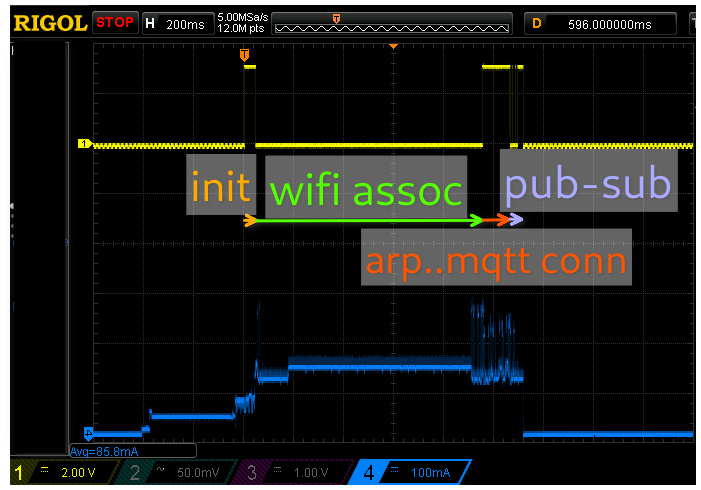

- #Esp32 enter deepsleep serial#
- #Esp32 enter deepsleep code#
- #Esp32 enter deepsleep Bluetooth#
Timer - using ESP32 internal RTC to count and wakeup after x seconds. There are multiple ways that ESP32 can wakeup from a deep sleep, such as: This feature is very specific to the ESP32 other boards such as Arduino or Raspberry Pi don't have this deep sleep functionality thus not suitable for outdoor / battery powered applications. With a custom and carefully designed board you can get a minimal consumption of about 5 μA. When operating in deep sleep mode, the board have a current consumption on the μA range. Having the board in deep sleep mode means cutting with the activities that consume more power while operating but leave just enough activity to wake up the processor when something interesting happens. If you put the board in deep sleep mode, it will reduce the power consumption and your batteries will last longer. a function that shows the type of wake upĪll mode of wake up can be associated to a wake up by timer in fact, the function pw_EnterSleep( dl, delayType) being called by all types of wake up allows also to insert the timer wake up (see below).Having the Eduponics Mini ESP32 board running on active mode with batteries it’s not ideal, since the power from batteries will drain very quickly. a stub function that is a function called where the board wake up after a deep sleep. functions for setting the wake up mode and entering in power reduction (these are explained in dedicated paragraphs). The ESP32Power.h script contains Functions, Variables and Constants for dealing with Power Reduction. a connector Female Male connected to pin named D15. a connector Female Female connected to pin named 3V3. a connector Female Female connected to pin named VIM. di wakes up from deep sleep by Ext0 pin. 

lg15 light sleep that can end by GPIO pin or after 15 seconds.The command h shows the help, below are some examples of commands sleeping:
#Esp32 enter deepsleep serial#
every two seconds, the event checks the serial port in order to manage the requests. after 2 seconds of start, displays the help and the event is disabled. #Esp32 enter deepsleep code#
The sketch uses a scheduler (see the Code Project article Arduino scheduler) with three events: The wake up types are summarized in the below table: Timer
#Esp32 enter deepsleep Bluetooth#
Is automatic when dealing with WIFI end/or Bluetooth The following table summarizes the possible ways of reducing the power of the ESP32 board in relation to what is achieved by the script in question. The sleeps modes considered here are essentially light and deep - they differ not only in the lesser or greater reduction in current but also in the behavior after waking up in fact, waking up from deep sleep is an almost restart, i.e., the program is reinitialized and only data in the RTC (Real Time Clock) memory are preserved. The ESP32Power.h script contains a set of functions for enter in so called sleep mode in order to reduce power consumption and functions to set how the board can be awakened. I also believe that this is an opportunity to solicit observation and criticism as I know that I am not an expert in this field so I apologize if the reader finds imprecisions or errors. I found many articles on this subject and I am grateful to their authors who allowed me to develop the program that I am about to describe.

This article shows the use of functions for reducing the power consumption by putting the board into sleep and how it can be awakened.







 0 kommentar(er)
0 kommentar(er)
